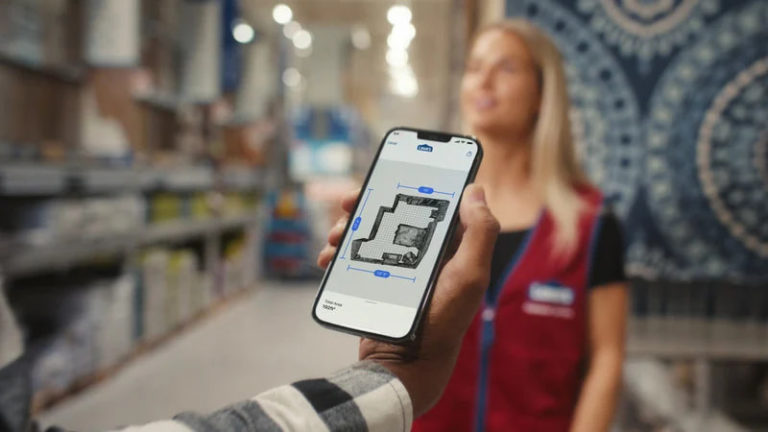
AR isn’t one technology but a convergence of several things that came before it. That includes everything from computer vision to AI to 3D modeling. And just as it borrows from other tech, it also gives back. In AR’s current era, it’s applied to everything from gaming to productivity.
As it often goes in emerging tech, well-capitalized endeavors can produce innovations that are spun in other directions, or inspire far-field use cases. This is the case with Augmodo. Among other things, the company took inspiration from the way Pokémon Go crowdsources spatial maps.
As background, Niantic’s planet-scale spatial mapping ambitions were amplified by Pokémon Go’s operational scale. Before it sold the game last year to focus on spatial mapping, it utilized far-flung players to passively collect place-based point clouds as they enjoyed the game’s migratory play.
Augmodo does something conceptually similar in passively mapping retail store interiors via sensors worn by store associates as they do their jobs throughout the store. The spatial data that results can be the foundation for several valuable endpoints, such as inventory management.
Opportunity Gap
Augmodo’s comparison to Pokémon Go’s crowdsourced mapping isn’t incidental. Founder Ross Finman ran Niantic’s spatial mapping efforts for a few years, circa 2020. He was also an astute AR thought leader and subject of several articles we published in that timeframe.
But beyond inspiration from Pokémon Go, the real inception for Augmodo came in 2022 during that year’s infamous baby-formula shortage. Finman drove hundreds of miles to find the product while held back by a lack of inventory transparency. He saw an opportunity gap .
So he devised the idea for store associates who can passively scan store shelves. To do this, Augmodo works with retailers to equip their staff with Smart Badges – lanyards with cameras that scan shelves as they go about their business (helping customers, stocking shelves, etc).
Augmodo claims that its passive scanning is 10x more effective and 100x cheaper than robotic interior scans. Those cost advantages make sense because the approach piggybacks on store associates’ existing movement – just like Niantic’s spatial maps utilized player movement.
New Revelations
Augmodo’s efforts recently inflected and popped back on our radar screen when the company secured $37.5 million in funding. Along with the funding came new revelations about its progress and trajectory since we last wrote about them, including retail-facing products it has established.
For example, its spatial AI assistant is a retail-facing tool that recommends optimal store layouts, helps identify out-of-stock inventory, and automatically orders products. This is likely a smart move to start with retailer-facing tools before it evolves into prospective consumer-facing apps.
Once established in a critical mass of stores, Augmodo could then make store aisles searchable. It can offer its retail partners the ability to offer their customers (B2B2C) real-time searchable info about what’s on the shelf at any time – tracing back to Finman’s baby-formula dilemma.
This concept of searchable store aisles has been an aspiration for the past two decades. The value proposition to find out exactly what’s on the shelf at nearby stores has taken various forms – from point-of-sale data in Google Shopping to attempts at in-store AR wayfinding.
Unsolved Problem
That last use case – in-store wayfinding – is a longstanding AR holy grail. In fact, when ARkit came out in 2017, the tech press fawned over a video that showed an AR wayfinding app in a grocery store. Through the phone’s viewfinder, one could navigate to items on their grocery list.
But there was one issue: the app didn’t exist. It was a concept video showcasing a flashy front-end UX, but no back-end functionality that was available anywhere in a real product. Building that grocery-store wayfinding app has since remained a vexing and unsolved problem.
The biggest issue is data. Without going too deep into the history, players such as Krillion, NearbyNow, Milo (acquired by eBay), and Google Shopping have assembled point-of-sale data to come fairly close to bringing this vision to life, albeit in more of a 2D search-engine format.
Beyond tapping into the right data, there’s the reality of a quickly changing world. Inventory is depleted rapidly in a vertical like grocery with thousands of high-turnover SKUs. This is where Augmodo’s vision could materialize, and where Finman could find himself back in the world of AR.
Editor’s note: Augmodo isn’t alone in tackling this challenge. Auki Labs and a few others have varied approaches towards more searchable and spatially-mapped store aisles (example). Stay tuned for more on this topic.
